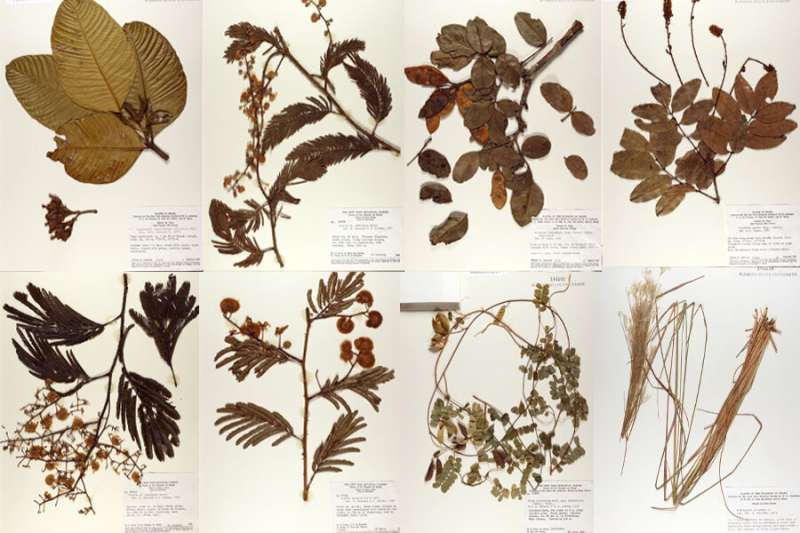This article has been reviewed according to Science X's editorial process and policies. Editors have highlighted the following attributes while ensuring the content's credibility:
fact-checked
peer-reviewed publication
trusted source
proofread
Colonization found to influence worldwide distribution of plant specimens

A study led by a Florida State University researcher that was published in Nature Human Behaviour shows how colonization has contributed to the distribution of plants specimens stored in herbaria collections around the world.
Plant diversity in nature is generally highest in tropical regions around the equator, with decreasing diversity closer to the poles. FSU Department of Geography Assistant Professor Xiao Feng and Purdue University Assistant Professor Daniel Park showed that the plant specimens housed in herbaria in Europe and North America are more comprehensive and diverse than the collections housed in the countries with more natural plant diversity.
By comparing modern finds with collection specimens, researchers can examine how a species has changed over time.
"People can't travel back in time to observe what plants look like 100 years ago, but herbaria collections give us a way to examine the past," Feng said. "If you're a researcher from Brazil, for example, and you want to study what native plants were like a century ago, you may have to travel to another country to examine certain species."
The researchers analyzed more than 85 million records from the Global Biodiversity Information Facility (GBIF) and surveyed herbaria collections from around the world to document the origins and destinations of specimens collected between 1600 and 2021.
Their data suggest that between 1600 to 1945, Europe and North America were responsible for the majority of intercontinental collecting activities, amassing large amounts of specimens from Africa, Asia and South America.
The trend mostly persisted in the era after World War II, when decolonization efforts increased and more countries in Africa and Asia gained autonomy. Despite the growth of collections in South America, Oceania and Asia, the discrepancy of biodiversity collections persists. The international collections by Europe and North America continued to expand, and today they remain larger than those on other continents.
The discrepancy between where plant diversity exists in nature and where it is preserved and catalogued by scientists is a legacy of colonialism, the researchers said. The movement of plant specimens from the biodiverse tropics to temperate regions runs counter to the natural gradient of biodiversity, in which biodiversity increases as we move from polar to equatorial regions.
"Biodiversity is probably best studied where it occurs, and that's not what has happened historically," Park said. "A lot of the science that happens with these specimens is very globally relevant; however, as we note in our paper, the means of contributing to this science is not distributed globally, at least not yet."
Some efforts are underway to address the disparities in access. One way collections have become more accessible is through digitization—gathering data and images from specimens for storage and sharing in a digital format. Regional, national and international groups are improving databases and increasing the amount of digitized specimens shared online. One example is iDigBio, a project organized by FSU, University of Florida and other institutions.
But digitization is still in its infancy, and there are many cases where access to physical specimens is necessary for the work researchers want to complete. Investments in infrastructure and training in previously colonized countries would also help to address disparities.
Park said acknowledging the role Indigenous people played in the collection and study of specimens and improving the information herbaria have about their plants is a good starting place. In many cases, herbaria don't have a full accounting of their collections. Understanding exactly how many items exist and their origin is key, he said.
This paper was an effort to better understand the scope of the issue and to involve researchers from places where herbaria collections are lacking. Feng and Park led a team of more than 50 authors from 39 countries for this work.
More information: Daniel S. Park et al, The colonial legacy of herbaria, Nature Human Behaviour (2023). DOI: 10.1038/s41562-023-01616-7
Journal information: Nature Human Behaviour
Provided by Florida State University


















